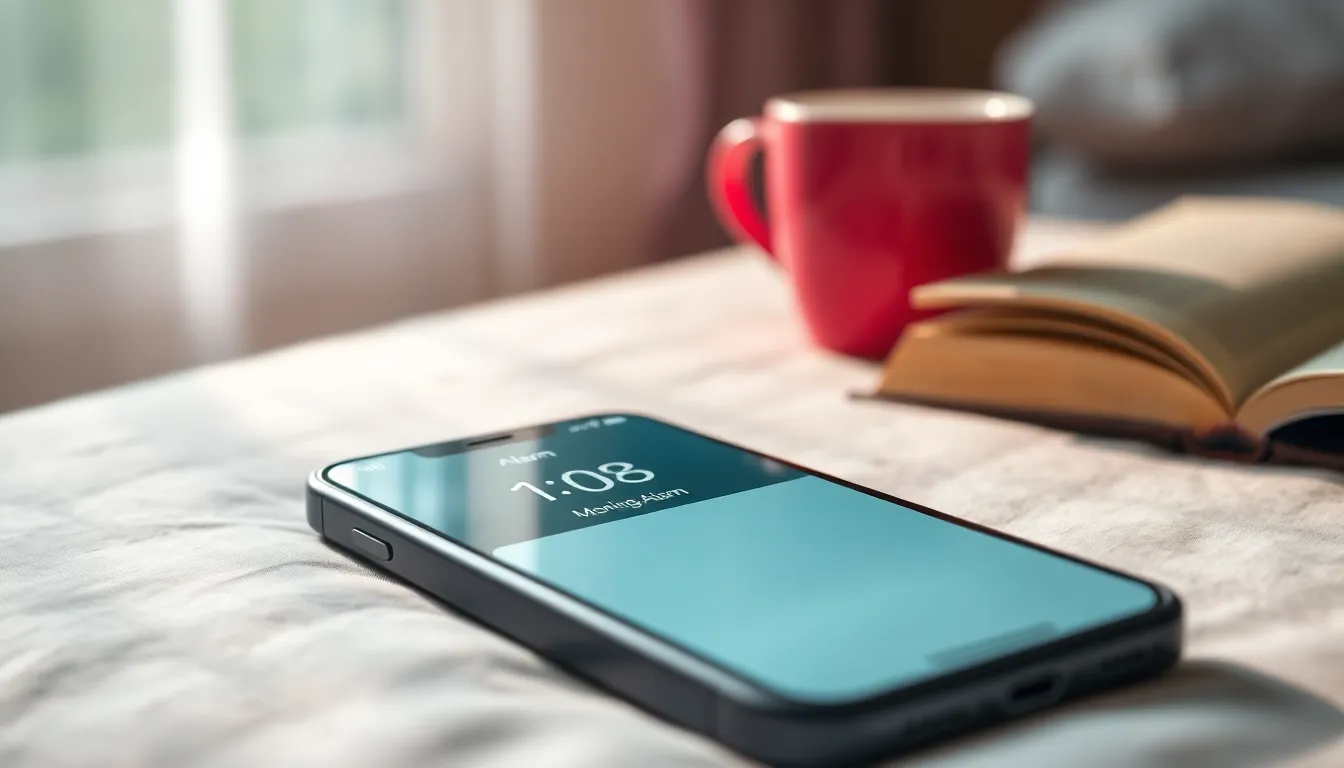Waking up late can feel like a mini disaster, especially when the reason is your iPhone alarm deciding to go on strike. Picture this: you’re dreaming of winning the lottery, only to wake up in a panic, realizing it’s already noon. Talk about a rude awakening!
But why does this happen? Is your iPhone secretly plotting against you or is it just having a bad day? From settings gone rogue to software glitches, there’s a whole world of possibilities that can leave you snoozing when you should be shining. Let’s dive into the reasons your trusty alarm may have let you down and how to ensure it’s always on your side for the next big wake-up call.
Table of Contents
ToggleCommon Reasons for iPhone Alarm Failures
Understanding why an iPhone alarm fails to go off can prevent future frustrations. Several factors can contribute to this issue.
Incorrect Alarm Settings
Setting the alarm incorrectly often leads to failure. A wrong time or AM instead of PM can cause alarms to not sound. Users sometimes forget to activate the alarm after setting it, which results in no wake-up call. Checking for repetition settings is essential since alarms need to be set to repeat if intended for multiple days. Adjusting volume levels affects alarm sounds as well; a muted device won’t alarm.
Do Not Disturb Mode
Activating Do Not Disturb mode silences notifications and alarms. Alarms can bypass this feature, but users sometimes configure settings incorrectly. If scheduled to silence during specific hours, alarms set within those hours won’t sound. Reviewing Do Not Disturb settings ensures alarms are not unintentionally ignored. Users should confirm the alarm time falls outside the muted timeframe to guarantee it will ring.
Software Glitches
Software glitches may prevent alarms from functioning correctly. Outdated software can lead to malfunctioning features, including alarms. Regular updates keep the device functioning optimally, reducing the chance of issues. Restarting the iPhone often resolves temporary glitches, allowing alarms to work properly again. Checking for settings conflicts can also help; resetting all settings can restore alarm functionality effectively.
Troubleshooting Your iPhone Alarm

Alarm issues can lead to frustrating mornings. Several common troubleshooting steps exist to help restore alarm functionality on an iPhone.
Checking Alarm Settings
Adjusting alarm settings is the first step. Open the Clock app and tap on the Alarm tab. Ensure the alarm time is correct and the alarm is toggled on. Verify the repeat settings if the alarm should ring on specific days. Also, confirm the selected sound is audible and distinct enough to wake someone up. Alerts can sometimes go unnoticed if set to subtle tones. Double-check these details to ensure alarms activate as intended.
Restarting Your Device
Restarting the device can resolve temporary glitches. Hold down the power button until the slide to power off prompt appears. After powering down, wait about 30 seconds before turning the device back on. This simple action often clears minor software issues. Restarting also frees up memory, which can enhance overall performance. A refreshing reboot might solve the alarm problem quickly.
Updating iOS
Updating iOS ensures the iPhone runs on the latest software. Head to Settings, then tap General, followed by Software Update. If an update is available, download and install it. Updates often fix bugs that may affect alarm functions. Keeping the device up to date improves security and performance. Regular updates enhance compatibility and ensure functionalities operate as designed.
Tips to Prevent Alarm Issues
Ensuring an iPhone alarm functions correctly requires attention to key settings and alternative solutions.
Testing Your Alarm
Testing the alarm assures it works as intended. Users should set a test alarm for a few minutes in the future to confirm it activates properly. Checking that the sound volume is adequate plays a vital role. Confirming that the alarm’s tone is loud enough also enhances wake-up reliability. Users can adjust their volume settings in the general sound menu for better results. Regularly testing alarms ensures consistent performance.
Using Alternative Alarm Apps
Exploring alternative alarm apps may provide added features and reliability. Several well-reviewed apps offer customizable settings and unique sounds. Some apps include vibration options or playlist functionalities to cater to individual preferences. Choosing a reputable app from the App Store can ensure better alarm performance. User reviews can also guide the selection process for a suitable app. Utilizing alternative options could improve the wake-up experience significantly.
Setting Multiple Alarms
Setting multiple alarms can act as a safety net against missed wake-ups. Users should consider scheduling alarms at various intervals for added reassurance. Configuring alarms with different tones can aid in differentiating them, reducing the chances of confusion. The iPhone allows users to set as many alarms as desired, providing flexibility. Relying on multiple alarms enhances the likelihood of waking up on time. This strategy can be especially useful for heavy sleepers or those with inconsistent wake-up schedules.
Experiencing a malfunctioning iPhone alarm can be incredibly frustrating and disruptive. By understanding the common reasons behind alarm failures and implementing the suggested troubleshooting steps, users can significantly reduce the chances of oversleeping. Regularly checking settings and ensuring the device is updated are key practices for maintaining alarm reliability. Exploring alternative alarm apps and setting multiple alarms can further enhance the wake-up experience. With these strategies in place, users can enjoy a more dependable and stress-free morning routine.


